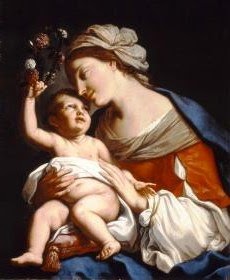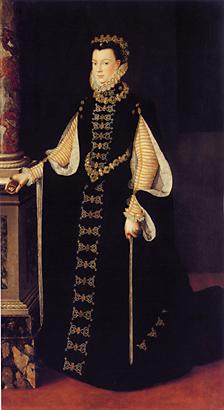The epitaph for Properzia de'Rossi reads "The bold splendor of two beautiful eyes would have progressed assuredly from marble statue to many sculptures. But it is new and strange cause for amazement that now, alas, envious death has taken the delicate hand, which, only a little while ago, made rough marbles live." Art Historian Catherine King argues that this epitaph captures how female artists were viewed as subordinate to male artists, even after death. She supports her argument with the fact that the author of the epitaph focused more on her beauty and delicacy as a woman than on her career as an artist. This epitaph gives substance to the debate over women's status during the Italian Renaissance and their public as well as private roles. Many modern women would be flattered with an epitaph that called them beautiful, however they would probably not like it if that was the only thing said about them, overshadowing their career or family.
As noted by Caroline P. Murphy in "The Economics of the Woman Artist," de'Rossi's career was amazing. Records reveal that in 1526, the sculptor received her final sum from the Church of San Petronio for her artwork that had been commissioned a few years earlier. She was payed a comparable sum to that of male sculptors. This fact tells historians that one, it was possible for women to have public lives and to have similar careers to men during this period of time in Italy. It also pays tribute to the talent of de'Rossi who was obviously a highly sought after artist because she was commissioned by one of the most important churches in Bologna, above her male peers. Murphy attributes de'Rossi's public life and role as a female artist as also her ultimate demise because her career has been overshadowed by her death around age forty at a syphilitic hospital and her several run-ins with the law. Murphy states that de'Rossi became an artist out of necessity and she probably developed an aggressive demeanor which was necessary to make money, but also landed her in trouble when colleagues accused her of "disturbing the peace and assaulting a male colleague" (Murphy 23).
Not much is actually known about de'Rossi's personal life, only records that attest to her public life such as court records and her sculptures remain. Historians estimate that she lived from about 1490 to 1530. In 1550, attesting to her artistic talent, Giorgio Vesari included her short biography in his book
Lives of the Most Eminent Architects, Painters, and Sculptors of Italy, in which she was the only woman honored. Later, Vasari would include other female artists in his books. It is also known that d'Rossi trained at the University of Bologna with a master sculptor, and that she did not come from a family of artists, which makes her even more exceptional as woman and a female artist of this time. Below is her most famous sculpture,
Joseph Fleeing Potipher's Wife as well as a portrait of Properzia de'Rossi.

 Unknown artist, Portrait of Properzia de Rossi, ca.1530. Bronze medal. 1/3 x 1/3 inches (0.8 x 0.8 cm). The British Museum, London, England. Courtesy of The Warburg Institute, London, England
Unknown artist, Portrait of Properzia de Rossi, ca.1530. Bronze medal. 1/3 x 1/3 inches (0.8 x 0.8 cm). The British Museum, London, England. Courtesy of The Warburg Institute, London, England
Sources:
King, Catherine. "Looking A Sight: Sixteenth Century Portraits of Women Artists."
Zeitschrift fur Kunstgeschichte 58 (1995): 381-406.
Murphy, Caroline P. "The Economics of the Woman Artist." Course Packet for History of European Women.
"Properzia de'Rossi." Clara Database of Women Artists. National Museum of Women in the Arts. http://clara.nmwa.org/index.php?g=entity_detail&entity_id=13689.



















,_Artemisia_Gentileschi.jpg)


